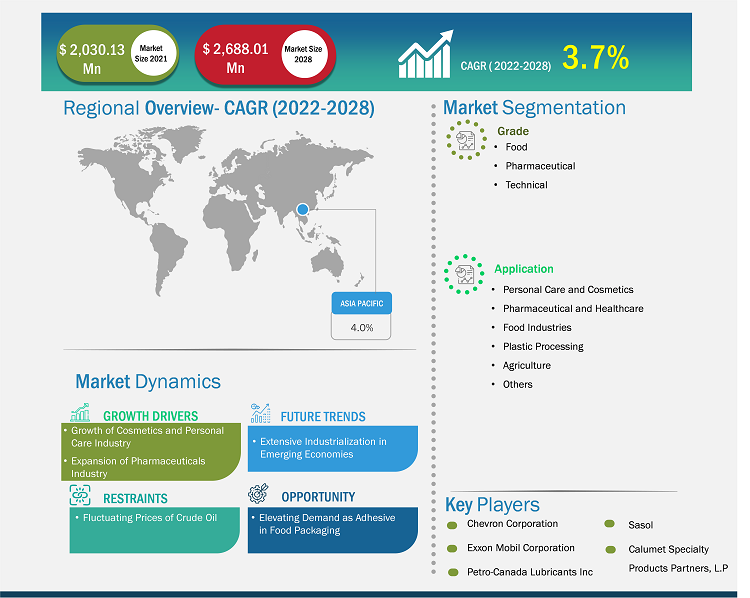$4450
$3560
The hot melt adhesives market size is projected to reach US$ 13.34 billion by 2031 from US$ 8.86 billion in 2024. The market is expected to register a CAGR of 6.2% during 2025–2031.
Hot Melt Adhesives Market Analysis
The hot melt adhesives market is growing steadily worldwide, driven by a range of industrial applications and technological innovations. These bonding agents, characterized by their quick bonding properties and versatility in various applications, are widely accepted in the packaging, automotive, electronics, construction, and hygiene industries.
Hot Melt Adhesives Market Overview
The growing e-commerce sector has significantly increased the demand in the packaging sector, where hot melt adhesives support faster production and automation. Additionally, these adhesives contribute to sustainability by emitting fewer volatile organic compounds compared to solvent-based products. Advancements in technology have increased the variety of hot melt adhesives, leading to innovations that achieve greater bond strength, low-temperature operation, and compatibility with various substrates.
Customize Research To Suit Your Requirement
We can optimize and tailor the analysis and scope which is unmet through our standard offerings. This flexibility will help you gain the exact information needed for your business planning and decision making.
Hot Melt Adhesives Market: Strategic Insights

Market Size Value in US$ 8.10 billion in 2022 Market Size Value by US$ 12.47 billion by 2030 Growth rate CAGR of 5.5% from 2022 to 2030 Forecast Period 2022-2030 Base Year 2022

Shejal
Have a question?
Shejal will walk you through a 15-minute call to present the report’s content and answer all queries if you have any.
 Speak to Analyst
Hot Melt Adhesives Market Drivers and Opportunities
Speak to Analyst
Hot Melt Adhesives Market Drivers and Opportunities
Customize Research To Suit Your Requirement
We can optimize and tailor the analysis and scope which is unmet through our standard offerings. This flexibility will help you gain the exact information needed for your business planning and decision making.
Hot Melt Adhesives Market: Strategic Insights

| Market Size Value in | US$ 8.10 billion in 2022 |
| Market Size Value by | US$ 12.47 billion by 2030 |
| Growth rate | CAGR of 5.5% from 2022 to 2030 |
| Forecast Period | 2022-2030 |
| Base Year | 2022 |

Shejal
Have a question?
Shejal will walk you through a 15-minute call to present the report’s content and answer all queries if you have any.
 Speak to Analyst
Speak to Analyst
Market Drivers:
Varied Uses Spur Demand Globally:
The hot melt adhesives market has broad usage in the packaging, automotive, building, and textile sectors, which has led to high demand worldwide.Growth of E-Commerce Increases Packaging Adhesive Requirement:
The rapid growth in e-commerce is driving the increased use of efficient packaging adhesives, resulting in the expansion of the hot melt adhesives market in the logistics and retail industries.Eco-Friendliness in Adhesives fueled by Sustainability Trends:
Increased consumer and regulatory interest in sustainability is driving the development of low-VOC, recyclable, and bio-based hot melt adhesives in various industries.Adoption of Automation Enhances Efficiency of Manufacturing Process:
An increase in the application of automated production lines creates a greater need for hot melt adhesives because of their quick bonding and efficient properties.
Market Opportunities:
Promising Growth Prospects in Asia Pacific Market:
The rising investments in Asia in terms of industrial base and infrastructure present profitable business opportunities for hot melt adhesive manufacturers.Innovation of Biodegradable and Recyclable Adhesive Technologies:
Innovative, environmentally friendly, and sustainable adhesives are expected to expand into new market segments as consumer and regulatory pressures increase.Low Temperature and Spray Adhesive Products Innovation:
The end-use is further increased by introducing advanced formulations that can be used in low-temperature processes and spray applications.Increasing Adoption in Electronics Assembly and Consumer Goods:
The use of hot melt adhesives in electronics bonding and consumer durable goods provides new sources of revenue.
Hot Melt Adhesives Market Report Segmentation Analysis
The hot melt adhesives market is divided into different segments to give a clearer view of how it works, its growth potential, and the latest trends. Below is the standard segmentation approach used in most industry reports:
By Product Type:
Glue Sticks:
They are used well in crafts, schools, and offices, and are best suited because they are easy to melt, apply, and bond paper, fabric, and lightweight materials.Glue Slugs:
High-strength compact pellets are ideal in automated assembly lines because they provide fast set times, consistent viscosity, and strong bonds on plastics, wood, and metal substrates.Others:
This segment covers bulk blocks, two-component sticks, and micronized powders, tailored to specific industrial applications such as footwear, electronics, and heavy-duty construction bonding.
By Type:
- Ethylene Vinyl Acetate
- Polyolefins
- Polyamides
- Polyurethanes
- Styrene Block Copolymers
- Others
By Application:
- Packaging
- Construction
- Automotive
- Furniture
- Footwear
- Electronics
- Others
By Geography:
- North America
- Europe
- Asia Pacific
- Middle East & Africa
- South & Central America
As the end-use industries such as construction, automotive, and packaging expand, the Asia Pacific hot melt adhesives market remains vital.
Hot Melt Adhesives Market Report ScopeHot Melt Adhesives Market Share Analysis by Geography
The Asia Pacific hot melt adhesives market is growing significantly. Emerging markets in South & Central America and the Middle East and Africa have untapped opportunities for hot melt adhesives providers to expand.
The hot melt adhesives market growth differs in each region due to the surging construction activities, technological advancements in manufacturing, and the growth of the automotive industry. Below is a summary of market share and trends by region:
1. North America
Market Share:
Holds significant share of global marketKey Drivers:
- Booming e-commerce industry
- Growing automotive industry
- Rising construction and infrastructure development
Trends:
Environmental regulations push sustainable adhesive product development
2. Europe
Market Share:
Substantial market share owing to automotive and aerospace expansionKey Drivers:
- Lucrative automotive, aerospace, and electronic sectors
- Strict government regulations on the use of eco-friendly materials
- Innovation in the manufacturing processes
Trends:
Use of hot melt adhesives in packaging and aerospace industries
3. Asia Pacific
Market Share:
The fastest-growing region with an increasing market share annuallyKey Drivers:
- Rapid industrialization and urbanization
- Automobile and electronics industries
- Infrastructure and manufacturing development supported by governments
Trends:
Growing demand in construction and manufacturing industries
4. Middle East and Africa
Market Share:
Growing market with steady progressKey Drivers:
- Growing industrial investments and urbanization
- Development in the construction sector
Trends:
Expansion of manufacturing capabilities and market penetration efforts
5. South and Central America
Market Share:
Although small, it is growing quicklyKey Drivers:
- Rising demand in automotive and manufacturing sectors
- Growing urbanization and regional industrialization
Trends:
Emerging opportunities through new production and technology adoption
Hot Melt Adhesives Market Players Density: Understanding Its Impact on Business Dynamics
High Market Density and Competition
Competition is intense due to the presence of established players such as H.B. Fuller Company, Henkel AG & Company KGaA, Arkema, 3M, Sika AG, Jowat SE, Hexcel Corporation, The Dow Chemical Company, Gorilla Glue Company, and DIC CORPORATION.
This high level of competition urges companies to stand out by:
- Creating bio-based adhesive formulations for low temperatures that prioritize sustainability and differentiate from conventional products
- Developing products with smart performance additives, such as antimicrobial agents or conductivity enhancers of superior, purpose-specific bonding solutions
- Partnering with automation equipment OEMs to distribute entirely tunable, complete hot melt adhesive dispensing systems
Opportunities and Strategic Moves
- Launch bio-based adhesive lines
- Localize low-temperature adhesive production
- Collaborate with e-commerce giants
- Develop composite bonding solutions
- Invest in automated dispensing technologies
Major Companies operating in the hot melt adhesives market are:
- H.B. Fuller Company
- Henkel AG & Company KGaA
- Arkema
- 3M
- Sika AG
- Jowat SE
- Hexcel Corporation
- The Dow Chemical Company
- Gorilla Glue Company
- DIC CORPORATION
Disclaimer: The companies listed above are not ranked in any particular order.
Other companies analyzed during the course of research:
- BASF SE
- Ashland Global Holdings Inc
- Avery Dennison Corporation
- Tesa SE
- Henkel Corporation
- RPM International Inc
- Wacker Chemie AG
- Soudal NV
- Resibras Química
- Krona Química
Hot Melt Adhesives Market News and Recent Developments
H.B. Fuller Company – Merger and Acquisition News
H.B. Fuller Company announced the acquisition of ND Industries Inc., a leading provider of specialty adhesives and fastener locking and sealing solutions serving customers in the automotive, electronics, aerospace, and other industriesJowat's Jowatherm PUR 630.30: Versatile Hot Melt
Jowat SE developed Jowatherm PUR 630.30, an adhesive with low viscosity and a broad spectrum of adhesion, ideal for many different lamination applications, such as in the automotive industry. A key feature of Jowatherm PUR 630.30 is its excellent wash resistance, ensuring a permanent and reliable bond that withstands even high stress.
Hot Melt Adhesives Market Report Coverage and Deliverables
The "Hot Melt Adhesives Market Size and Forecast (2021–2031)" report provides a detailed analysis of the market covering the following areas:
- Hot melt adhesives market size and forecast at global, regional, and country levels for all market segments covered under the scope
- Hot melt adhesives market trends, as well as market dynamics such as drivers, restraints, and key opportunities
- Detailed Porter's Five Forces Analysis and SWOT analysis
- Hot melt adhesives market analysis covering market trends, global and regional framework, major players, regulations, and recent market developments
- Industry landscape and competition analysis covering market concentration, heat map analysis, prominent players, and recent developments for the hot melt adhesives market
- Detailed company profiles

Report Coverage
Revenue forecast, Company Analysis, Industry landscape, Growth factors, and Trends

Segment Covered
Product Type, Type, and Application

Regional Scope
North America, Europe, Asia Pacific, Middle East & Africa, South & Central America

Country Scope
This text is related
to country scope.
Frequently Asked Questions
H.B. Fuller Company, Henkel AG & Company KGaA, Arkema, 3M, Sika AG, Jowat SE, Hexcel Corporation, The Dow Chemical Company, Gorilla Glue Company, and DIC CORPORATION are among the key players operating in the market.
Adoption of bio-based hot melt adhesives is likely to emerge as a key trend in the market in the future.
Asia Pacific dominated the market in 2024.
High demand for hot melt adhesives in the e-commerce industry and the shift from solvent adhesives to hot melt adhesives are major factors driving the market.
The market size is projected to reach US$ 13.34 billion by 2031.
The List of Companies - Hot Melt Adhesives Market
- H.B. Fuller Company
- Henkel AG & Company KGaA
- Arkema
- 3M
- Sika AG
- Jowat SE
- Hexcel Corporation
- The Dow Chemical Company
- Gorilla Glue Company
- DIC CORPORATION
- BASF SE
- Ashland Global Holdings Inc
- Avery Dennison Corporation
- Tesa SE
- Henkel Corporation
- RPM International Inc
- Wacker Chemie AG
- Soudal NV
- Resibras Química
- Krona Química
- ACC Gulf
- Al Mehraj Industries Company LLC
- Super Bond Adhesive Pvt. Ltd.
- Stratton Packaging
- Robatech SA (Pty) Ltd
- Nitto Denko Corporation
- IPG
- Shurtape Technologies, LLC
- Scapa
- LINTEC Corporation
The Insight Partners performs research in 4 major stages: Data Collection & Secondary Research, Primary Research, Data Analysis and Data Triangulation & Final Review.
- Data Collection and Secondary Research:
As a market research and consulting firm operating from a decade, we have published many reports and advised several clients across the globe. First step for any study will start with an assessment of currently available data and insights from existing reports. Further, historical and current market information is collected from Investor Presentations, Annual Reports, SEC Filings, etc., and other information related to company’s performance and market positioning are gathered from Paid Databases (Factiva, Hoovers, and Reuters) and various other publications available in public domain.
Several associations trade associates, technical forums, institutes, societies and organizations are accessed to gain technical as well as market related insights through their publications such as research papers, blogs and press releases related to the studies are referred to get cues about the market. Further, white papers, journals, magazines, and other news articles published in the last 3 years are scrutinized and analyzed to understand the current market trends.
- Primary Research:
The primarily interview analysis comprise of data obtained from industry participants interview and answers to survey questions gathered by in-house primary team.
For primary research, interviews are conducted with industry experts/CEOs/Marketing Managers/Sales Managers/VPs/Subject Matter Experts from both demand and supply side to get a 360-degree view of the market. The primary team conducts several interviews based on the complexity of the markets to understand the various market trends and dynamics which makes research more credible and precise.
A typical research interview fulfils the following functions:
- Provides first-hand information on the market size, market trends, growth trends, competitive landscape, and outlook
- Validates and strengthens in-house secondary research findings
- Develops the analysis team’s expertise and market understanding
Primary research involves email interactions and telephone interviews for each market, category, segment, and sub-segment across geographies. The participants who typically take part in such a process include, but are not limited to:
- Industry participants: VPs, business development managers, market intelligence managers and national sales managers
- Outside experts: Valuation experts, research analysts and key opinion leaders specializing in the electronics and semiconductor industry.
Below is the breakup of our primary respondents by company, designation, and region:

Once we receive the confirmation from primary research sources or primary respondents, we finalize the base year market estimation and forecast the data as per the macroeconomic and microeconomic factors assessed during data collection.
- Data Analysis:
Once data is validated through both secondary as well as primary respondents, we finalize the market estimations by hypothesis formulation and factor analysis at regional and country level.
- 3.1 Macro-Economic Factor Analysis:
We analyse macroeconomic indicators such the gross domestic product (GDP), increase in the demand for goods and services across industries, technological advancement, regional economic growth, governmental policies, the influence of COVID-19, PEST analysis, and other aspects. This analysis aids in setting benchmarks for various nations/regions and approximating market splits. Additionally, the general trend of the aforementioned components aid in determining the market's development possibilities.
- 3.2 Country Level Data:
Various factors that are especially aligned to the country are taken into account to determine the market size for a certain area and country, including the presence of vendors, such as headquarters and offices, the country's GDP, demand patterns, and industry growth. To comprehend the market dynamics for the nation, a number of growth variables, inhibitors, application areas, and current market trends are researched. The aforementioned elements aid in determining the country's overall market's growth potential.
- 3.3 Company Profile:
The “Table of Contents” is formulated by listing and analyzing more than 25 - 30 companies operating in the market ecosystem across geographies. However, we profile only 10 companies as a standard practice in our syndicate reports. These 10 companies comprise leading, emerging, and regional players. Nonetheless, our analysis is not restricted to the 10 listed companies, we also analyze other companies present in the market to develop a holistic view and understand the prevailing trends. The “Company Profiles” section in the report covers key facts, business description, products & services, financial information, SWOT analysis, and key developments. The financial information presented is extracted from the annual reports and official documents of the publicly listed companies. Upon collecting the information for the sections of respective companies, we verify them via various primary sources and then compile the data in respective company profiles. The company level information helps us in deriving the base number as well as in forecasting the market size.
- 3.4 Developing Base Number:
Aggregation of sales statistics (2020-2022) and macro-economic factor, and other secondary and primary research insights are utilized to arrive at base number and related market shares for 2022. The data gaps are identified in this step and relevant market data is analyzed, collected from paid primary interviews or databases. On finalizing the base year market size, forecasts are developed on the basis of macro-economic, industry and market growth factors and company level analysis.
- Data Triangulation and Final Review:
The market findings and base year market size calculations are validated from supply as well as demand side. Demand side validations are based on macro-economic factor analysis and benchmarks for respective regions and countries. In case of supply side validations, revenues of major companies are estimated (in case not available) based on industry benchmark, approximate number of employees, product portfolio, and primary interviews revenues are gathered. Further revenue from target product/service segment is assessed to avoid overshooting of market statistics. In case of heavy deviations between supply and demand side values, all thes steps are repeated to achieve synchronization.
We follow an iterative model, wherein we share our research findings with Subject Matter Experts (SME’s) and Key Opinion Leaders (KOLs) until consensus view of the market is not formulated – this model negates any drastic deviation in the opinions of experts. Only validated and universally acceptable research findings are quoted in our reports.
We have important check points that we use to validate our research findings – which we call – data triangulation, where we validate the information, we generate from secondary sources with primary interviews and then we re-validate with our internal data bases and Subject matter experts. This comprehensive model enables us to deliver high quality, reliable data in shortest possible time.
Trends and growth analysis reports related to Hot Melt Adhesives Market

Oct 2025
Ester for Synthetic and Bio-Based Lubricants Market
Size and Forecast (2021 - 2031), Global and Regional Share, Trend, and Growth Opportunity Analysis Report Coverage: By Ester Type [Monoesters, Diesters, Polyol Esters (Trimethylolpropane Esters, Pentaerythritol Esters, Neopentyl Glycol Esters, Trimethylol Ethane Esters, and Dipentaerythritol Esters), Trimellitate Esters, Complex Esters, and Others], Lubricant Type (Synthetic Lubricants and Biobased Lubricants), Application [Engine Oil (MCO, PCMO, HDEO, and Other Engines), Compressor Oil, (Refrigeration, Air Compressors, Natural Gas Compressors, and Others Compressors), Hydraulic Fluids, Gear Oil, Transmission Oil, Coolants, and Others], and End Use [Automotive (Conventional Vehicles and Electric Vehicles), Textile, Marine, Mining and Metallurgy, Aviation, Energy and Power, and Others]

Oct 2025
Synthetic Ester Lubricants for Electrical and Electronics Market
Size and Forecast (2021 - 2031), Global and Regional Share, Trend, and Growth Opportunity Analysis Report Coverage: By Product Type (Gear Oil, Transformer Oil, Immersion Cooling Fluids, Refrigeration Oil, Grease, Metalworking Fluids, and Others) and End Use (General Air Conditioners, Automotive Air Conditioners, Refrigerators, and Others)

Oct 2025
Synthetic Ester Lubricants for Construction Market
Size and Forecast (2021 - 2031), Global and Regional Share, Trend, and Growth Opportunity Analysis Report Coverage: By Product Type (Engine Oil, Hydraulic Oil, Gear Oil, Grease, Turbine Oil, Metalworking Fluids, and Others) and End Use (Construction Machinery, Concrete and Construction Tools, Wire Ropes and Chains, and Others)

Oct 2025
Synthetic Ester Lubricants for Energy and Power Market
Size and Forecast (2021 - 2031), Global and Regional Share, Trend, and Growth Opportunity Analysis Report Coverage: By Product Type (Engine Oil, Hydraulic Oil, Gear Oil, Transformer Oil, Immersion Cooling Fluids, Refrigeration Oil, Grease, Turbine Oil, Metalworking Fluids, and Others) and End Use (River Dam, Offshore Wind Power, Energy Storage Systems, and Others)

Oct 2025
Aviation Synthetic Ester Lubricants Market
Size and Forecast (2021 - 2031), Global and Regional Share, Trend, and Growth Opportunity Analysis Report Coverage: By Product Type (Engine Oil, Hydraulic Oil, Gear Oil, Transformer Oil, Refrigeration Oil, Grease, Turbine Oil, Metalworking Fluids, and Others), End Use (Commercial Aircraft, Military Aircraft, Spacecraft/Satellites, Drone and UAV, and Others), and Geography (North America, Europe, Asia Pacific, Middle East and Africa, and South and Central America)

Oct 2025
Marine Synthetic Ester Lubricants Market
Size and Forecast (2021 - 2031), Global and Regional Share, Trend, and Growth Opportunity Analysis Report Coverage: By Product Type [Engine Oil, Hydraulic Oil, Gear Oil, Transformer Oil, Refrigeration Oil, Grease, Turbine Oil, and Others], and End Use [Cargo Ships, Passenger Ships, Naval Vessels (Military End Uses), Offshore Support Vessels, Fishing and Leisure, Port Equipment, and Others], and Geography [North America, Europe, Asia Pacific, Middle East and Africa, and South and Central America]

Oct 2025
Automotive Synthetic Ester Lubricants Market
Size and Forecast (2021 - 2031), Global and Regional Share, Trend, and Growth Opportunity Analysis Report Coverage: By Product Type (Engine Oil [MCO, PCMO, HDEO, and Others], Hydraulic Oil, Gera Oil, Immersion Cooling Fluids, Refrigeration Oil, Grease, Metalworking Fluids, and Others), End Use (Conventional Vehicles and Electric Vehicles), and Geography (North America, Europe, Asia Pacific, Middle East and Africa, and South and Central America)

Oct 2025
Steel Sandwich Panel Market
Size and Forecast (2021 - 2031), Global and Regional Share, Trend, and Growth Opportunity Analysis Report Coverage: By Core Material (Polyisocyanurate and Mineral Wool), Application (Wall Panels, Roof Panels, and Others), and End Use (Residential, Commercial, Industrial, Institutional, and Infrastructure)